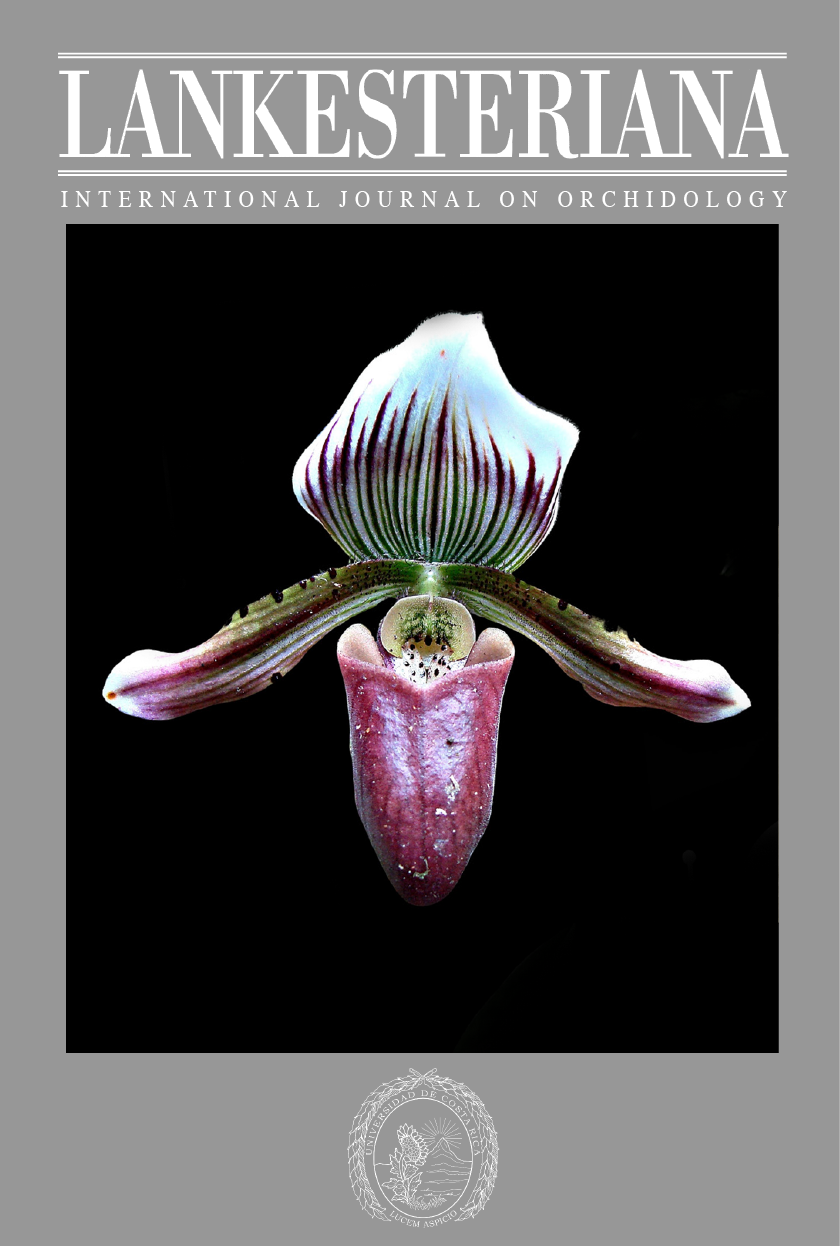Comparative floral surface micromorphology helps to discriminate between species of <i>Paphiopedilum</i> (Orchidaceae: Cypripedioideae) from Peninsular Malaysia
DOI:
https://doi.org/10.15517/lank.v21i1.46714Abstract
Abstract. The floral micromorphology of critically endangered Paphiopedilum Pfitzer [P. barbatum (Lindl.) Pfitzer, P. callosum var. sublaeve (Rchb.f.) P.J.Cribb and P. niveum (Rchb.f.) Stein] were analyzed concerning either infrageneric taxonomy or physioecological demands. The first two species are phylogenetically close and superficially identical but occur with distinct phytogeographical distributions in the region. The third species is a phylogenetically distant congener that inhabits limestone areas in the northern part of Peninsular Malaysia. Using scanning electron microscopy (SEM), we investigated the surface of the dorsal sepal, synsepal, lateral petals, pouch or labellum, and staminode. Amongst the investigated features were epicuticular waxes, epicuticular ornamentation, trichome distribution and type, pustular glands, and papillae. Our study supports the distinction of P. barbatum from P. callosum var. sublaeve, which belong to subgenus Paphiopedilum, and from P. niveum, a species belonging to subgenus Brachypetalum, a separated monophyletic clade. Comparatively, P. barbatum has Type III non-glandular trichomes on the margin of its lateral petals, which are absent in P. callosum var. sublaeve. Paphiopedilum callosum var. sublaeve and P. niveum are distinguishable from P. barbatum by a confined distribution of papillae. The epicuticular ornamentation and distribution of trichomes on staminode discriminate between P. barbatum and P. callosum var. sublaeve and differentiates them from P. niveum. Compared to P. barbatum and P. niveum, stomata in P. callosum var. sublaeve were superficial with prominently raised guard cells. From the physioecological view, the absence of glandular trichomes, and the low occurrence of papillae and stomata on the floral parts explain the unscented flowers of P. barbatum and P. callosum var. sublaeve. A combination of the features examined is taxonomically valuable for delimitation of the species at the infrageneric level, although the diagnostic characters are far inadequate for a generic taxonomic revision. A study with a more extensive sampling from the three subgenera of Paphiopedilum, including subgenus Parvisepalum, is anticipated to elucidate the level of variation of the analyzed microcharacters.
Key Words: physioecological importance, Peninsular Malaysia, subgenus Brachypetalum, subgenus Paphiopedilum, scanning electron microscopy, taxonomic delimitation
Downloads

Published
How to Cite
Issue
Section
License
According to the Open Access policy promoted by the University of Costa Rica, all the papers published by Lankesteriana are licensed under the Creative Commons copyright and can be downloaded free of charge. The journal holds copyright and publishing rights under the CC BY-NC-ND 3.0 CR license.
Before the publication of the materials submitted by the author(s) in LANKESTERIANA, the author(s) hereby assign all rights in the article to the Lankester Botanical Garden.




